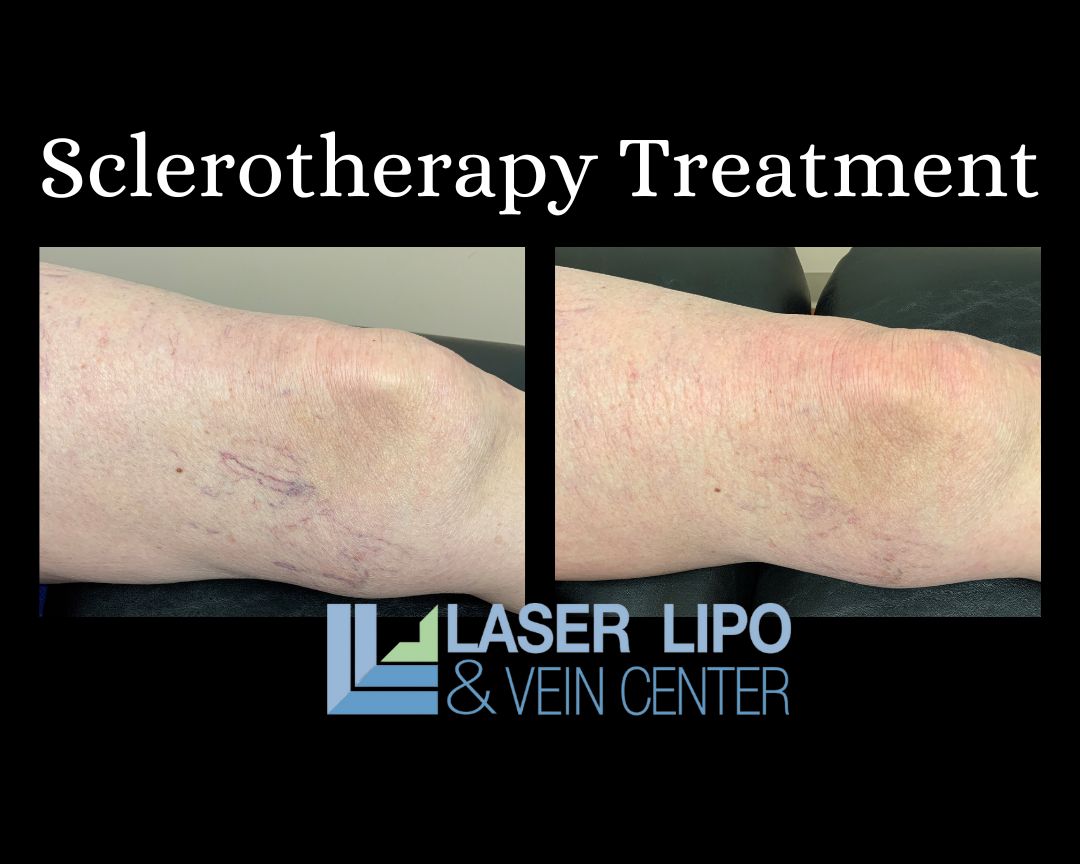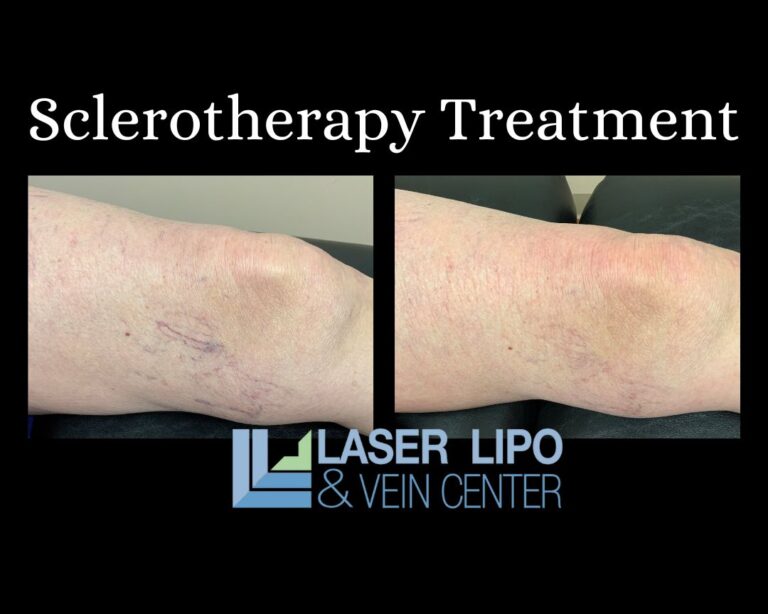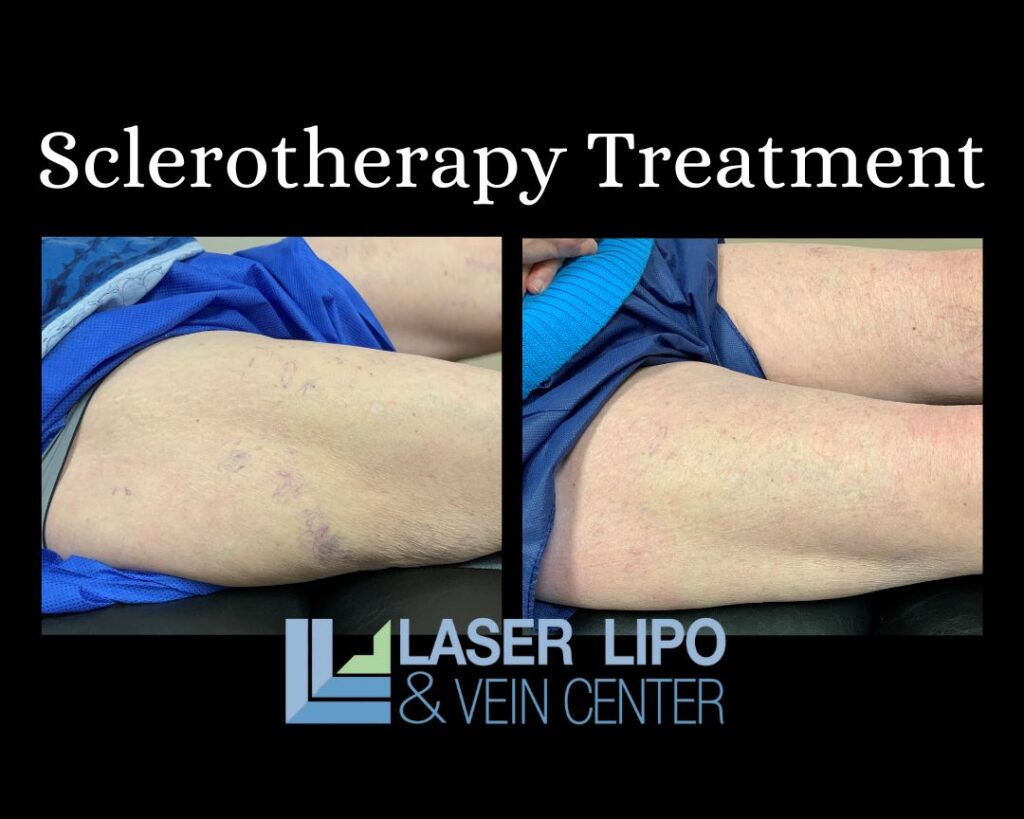What to Expect After Sclerotherapy
Sclerotherapy is a popular and effective treatment for spider and varicose veins. If you’ve recently undergone or are considering sclerotherapy, it’s important to have a clear understanding of what to expect during and after the procedure. We guide you through the process below, and will discuss what to expect from preparation to recovery, providing valuable insights and tips along the way.
Understanding Sclerotherapy
Sclerotherapy is a minimally invasive procedure that involves the injection of a specialized solution directly into the affected veins. This solution irritates the veins, causing them to collapse and eventually fade from view. The procedure is typically performed in a doctor’s office or clinic and can be completed in under 15 minutes. While the treatment itself is relatively quick, the results may take several weeks to manifest fully.
Benefits of Sclerotherapy
Sclerotherapy offers numerous benefits for individuals seeking to improve the appearance of their legs and alleviate symptoms associated with spider and varicose veins. Some of the key advantages of sclerotherapy include:
- Non-surgical: Sclerotherapy is a non-surgical alternative to more invasive procedures, such as vein stripping or laser treatments. It requires no incisions or anesthesia, making it a relatively low-risk option.
- Effective for spider veins and small varicose veins: Sclerotherapy is particularly effective in treating spider veins and small varicose veins. It can significantly reduce their visibility and improve the overall appearance of the legs.
- Quick and convenient: The treatment itself is quick, typically taking only 10 to 15 minutes. It can be performed in the doctor’s office, allowing for minimal disruption to your daily routine.
- Minimal downtime: Recovery from sclerotherapy is generally quick, with most individuals able to resume their normal activities on the same day. While some mild side effects may occur, they typically resolve within a few days.

Preparing for Sclerotherapy Treatment
Proper preparation before undergoing sclerotherapy can contribute to a smoother experience and enhance the effectiveness of the treatment. Make sure you take each of the steps below in preparation for a successful sclerotherapy treatment.
Consultation with your doctor
Before scheduling your sclerotherapy treatment, it’s crucial to consult with a qualified vein specialist or dermatologist. During this consultation, your doctor will evaluate your condition, discuss your medical history, and assess whether sclerotherapy is the appropriate treatment for you. They may also explain the procedure in detail, including the potential risks and benefits.
Medication adjustments
Inform your doctor about any medications you are currently taking, including over-the-counter drugs, supplements, and vitamins. Certain medications, such as blood thinners and anti-inflammatory drugs, may need to be temporarily discontinued before the procedure to reduce the risk of excessive bleeding or complications. Follow your doctor’s instructions regarding medication adjustments carefully.
Skin and clothing preparation
On the day of your sclerotherapy appointment, it’s important to wear comfortable clothing, preferably loose-fitting garments that allow easy access to the treatment area. Avoid applying any lotions, oils, or skincare products to your legs before the procedure, as they can interfere with the treatment. Additionally, refrain from tanning or sunburning your legs prior to sclerotherapy, as it can affect the outcome.
Hydration and nutrition
Staying adequately hydrated is essential for your overall well-being and contributes to a smoother recovery. Drink plenty of water in the days leading up to your procedure to ensure proper hydration. It’s also advisable to have a light, nutritious meal before your appointment to prevent discomfort during the treatment. However, avoid heavy meals that may cause bloating or indigestion.
The Sclerotherapy Procedure
Sclerotherapy is a relatively quick and comfortable procedure that can be performed in the doctor’s office. You will be asked to lie down on a treatment table with your legs elevated. The doctor will clean the injection site and may apply a local anesthetic if necessary. A specialized solution, known as a sclerosing agent, will then be injected directly into the affected veins using a fine needle.
Sensations during the procedure
During the injection process, you may experience some mild sensations, such as a slight pinch or stinging sensation. These sensations are temporary and typically subside quickly. Some individuals find it helpful to distract themselves during the procedure by engaging in conversation with the doctor or listening to calming music.
Multiple injections and compression
Depending on the extent of your vein condition, multiple injections may be required to address all the affected areas. The doctor will carefully target each vein, ensuring maximum effectiveness. After the injections, your doctor may apply compression stockings or bandages to the treated areas. Compression helps to promote blood flow and reduce the risk of complications.
Post-procedure instructions
Following the sclerotherapy procedure, your doctor will provide specific post-procedure instructions to optimize your recovery. It’s important to follow these instructions closely to achieve the best possible results. Some common post-procedure recommendations include:
- Walking: Engaging in light physical activity, such as walking, helps promote blood flow and prevents blood clots. Your doctor may advise you to walk for a certain period of time following the procedure.
- Compression stockings: Wearing compression stockings or bandages as instructed by your doctor helps support the treated veins, reduces swelling, and enhances the healing process.
- Avoiding sun exposure: Direct sun exposure to the treated area should be avoided for a few days after sclerotherapy. Sunburn can interfere with the healing process and may increase the risk of complications.
- Proper skin care: Keep the treated area clean and follow any specific skincare instructions your doctor provides. Avoid applying any creams, lotions, or oils unless specifically advised by your healthcare provider.
Recovery and Results
Recovery from sclerotherapy is generally smooth and relatively quick. While individual experiences may vary, here is a general timeline of what to expect during the recovery process:
Immediate post-treatment period
After the procedure, you may experience some mild side effects, such as bruising, swelling, or redness around the injection sites. These side effects are usually temporary and subside within a few days. You may also notice a slight improvement in the appearance of your veins immediately after treatment, but full results will take time to develop.
Weeks 1-2
During the first week or two following sclerotherapy, it’s important to continue wearing compression stockings as your doctor recommends. These stockings help maintain pressure on the treated veins, ensuring optimal results. It’s normal to experience some residual bruising or discoloration during this time, but they should gradually fade.
Weeks 3-6
As the weeks progress, you may start to notice a significant reduction in the appearance of your spider veins or varicose veins. The treated veins will gradually fade and be absorbed by the body, leading to smoother and clearer skin. However, it’s important to remember that individual response to sclerotherapy can vary, and some individuals may require additional treatments for optimal results.
Follow-up appointments
Your doctor will schedule one or more follow-up appointments to monitor your progress and evaluate the effectiveness of the treatment. During these appointments, your doctor will assess the condition of your veins, address any concerns or questions you may have, and determine if further treatments are necessary.

Maintaining Results and Long-Term Care
To maintain the results of your sclerotherapy treatment and prevent the recurrence of spider veins or varicose veins, it’s important to adopt healthy lifestyle habits and follow your doctor’s recommendations. Here are some essential tips for long-term care:
Regular exercise
Engaging in regular physical activity, such as walking, swimming, or cycling, can help improve circulation and prevent the formation of new veins. Aim for at least 30 minutes of moderate exercise most days of the week.
Healthy diet
Maintaining a balanced diet rich in fiber, vitamins, and minerals can support overall vein health. Include plenty of fruits, vegetables, whole grains, and lean proteins in your meals. Avoid excessive sodium intake, as it can contribute to fluid retention and swelling.
Weight management
Maintaining a healthy weight reduces the strain on your veins and lowers the risk of developing new spider veins or varicose veins. If necessary, work with a healthcare professional to achieve and maintain a healthy weight.
Avoid prolonged sitting or standing
Prolonged periods of sitting or standing can put excess pressure on your veins, leading to poor circulation and potential vein issues. If your job requires long periods of sitting or standing, take regular breaks to stretch and move around.
Regular check-ups
Schedule regular check-ups with your vein specialist or dermatologist to monitor your vein health and address any concerns or changes in your condition. Early detection and intervention can help prevent the progression of vein problems.
Conclusion
Sclerotherapy is a safe and effective treatment for spider veins and varicose veins, offering both cosmetic and symptomatic relief. By understanding what to expect before, during, and after the procedure, you can optimize your experience and achieve the best possible results. Remember to consult with a qualified healthcare professional to determine if sclerotherapy is the right treatment option for you and to receive personalized guidance throughout the process. With proper care and long-term lifestyle habits, you can enjoy healthier, more beautiful legs for years to come.

